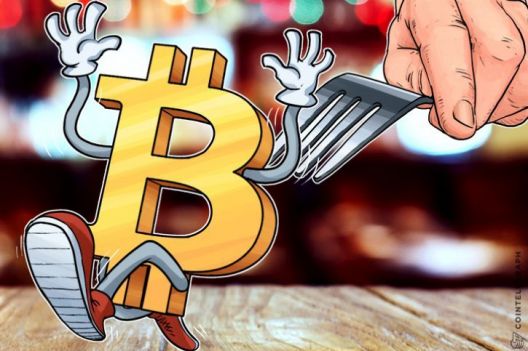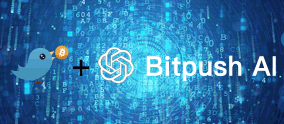 值得信赖的区块链资讯!
值得信赖的区块链资讯!
Forking Cryptocurrency Protocols
A fork is a technical term widely used in software engineering, which describes the process of using the original source code of a software and generating a different independent software package. Forking in cryptocurrency holds similar definition — a crypto software update during which alternative versions of the cryptocurrency protocols are created. Software code establishes the rules to which community should comply to if they want to continue using the platform: how big the block size is, what rewards do miners get, how transaction fees are generated and measured, so on and so forth. The difference between a regular software fork and a crypto fork is that the latter has a value system building in so that the occurring fork can reorganize the existing “wealth” distribution inside the crypto space.

As cryptocurrencies are open source and do not have a centralized governing power, a crypto community (a group of developers, miners, and users) is in charge of developing and upgrading the platform. As such, developers constantly create updates to improve and enhance network performance and fix prevailing issues. Another set of developers, called core developers tend to lead the protocol development by pushing through the latest software updates. However, core developers do not act as a centralized ruling power of the network, as the community retains the right to disagree with proposed changes and take an action against it. For example, if the community members are not satisfied with proposed protocols and choose not to conform with the updates they can go to a different direction and develop alternative versions of the code and fork the blockchain. There are two types of forks: soft fork and hard fork.
Hard Fork
The hard fork also known as the not-backward compatible fork is a permanent divergence in a software protocol update. Hard forks increase the set of transactions that are valid by introducing properties that make previously invalid features viable. This fork requires nodes to upgrade the latest version of a software code and comply with new rules, in order to participate in the network. Those who decide not to upgrade will keep working on a separate chain and exclude the blocks that comply with the new rule set; hence the chain will split into two branches. The fork is characterized as permanent because after split happens, the chains will separate forever and operate under different rules that are not compatible with each other. The original and upgraded chains will run in parallel, but it will not be possible to transfer funds between the two due to their mutually exclusive propositions. Hard fork protocol updates include proposed modifications around:
-
Block size
-
Policies against network abuse
-
Consensus mechanism
-
New opcodes
-
Fixing bugs
Soft Fork
The soft fork also known as the backward compatible fork is a temporary divergence in a software code update, which does not make previous rules obsolete. Consequently, this type of fork does not make it mandatory for every single node to comply with new rules by updating their systems, as soft fork principles are compatible with legacy rules. The soft fork is characterized by reducing the set of valid transactions as the rule set becomes stricter. When soft forking happens the nodes that comply with new tighter rules have to reject those blocks that are not considered valid under soft fork mandates. Additionally, even though soft fork does not demand all nodes to upgrade, it does require most of the miners to do so in order the soft fork to be recognized and new principles to be enforced. Soft fork chain splits are temporary because eventually all nodes are prompted to update their system — nodes complying with legacy rules will soon find themselves violating the new rule set that will result in the network rejecting the blocks they produce. This will prompt the nodes to update their software and join the ‘true’ blockchain. However, it has to be noted that if the majority of nodes do not comply with soft fork update then the winner blockchain will be the one where nodes use legacy rules; subsequently, the chain with new rules will eventually wipe out. Soft fork protocol updates include proposed modifications regarding:
-
Segregated witness
-
Check sequence verifier
-
Cryptographic schemes
So, a fork is essentially a schism between the community of developers, miners, and users that is caused by an absence of consensus upon existing protocol modifications and an implementation of new properties. It is possible for both soft and hard forks to result in a chain split, which is two or more types of blockchains running at the same time with shared past until their governing mandates deviated from one another. Likewise, both forks can avoid the split; however, this is much more challenging for a hard fork as the nodes running on a hard fork are no longer compatible with legacy nodes.
The hard fork tends to be associated with more complications than the soft one. On the one hand, hard fork results in coin duplication or dual funds, as prior to the chain split every coin existing on the original blockchain gets duplicated, half of it staying on the original and another half transferring to the forked chain. This has been referred to as ‘free candy’, as the coin holder keeps the original coin and simultaneously receives the new coin in the same amount; hence the hard fork diverges not only the software but also the currency. Coin duplication has been a hot topic of debate in terms of should the duplicated money be officially recognized or not (some exchanges have refused to acknowledge this duplication). Additionally, the hard fork causes rivalry between the diverged groups — these communities will compete and try to persuade the public about which one of them holds more legitimacy and better represents ‘the original coin’; the fight over the bigger market share and network size will prevail, which can jeopardize the value of these coins.
One of the most famous hard forks that have occurred is a Bitcoin Cash — on August 1, 2017 a part of bitcoin community decided that they wanted to undertake drastic changes and introduce a new version of bitcoin blockchain protocol with larger block sizes; since not the whole community accepted the new rules, it diverged and two separate communities were established — Bitcoin and Bitcoin Cash.
Open source feature of cryptocurrency empowers users. Unlike the centralized networks, It does not limit a user to two options of either following the flow or opting out entirely; rather it allows for copying the code and generating a favorable rule set by forking the blockchain. However, forking is not as simple as it might sound like — behind the scenes a handful of political and economic problems arise, which splits up the community and instigates increased competition, which often might be accompanied by speculations and fraud.
© Panda Analytics, Inc.
2018
比推快讯
更多 >>- 自推出以来,符文交易占所有比特币交易的68%
- 加密矿企Argo去年开采1760枚比特币,实现5060万美元收入
- IRISnet 3.0升级拟于5月中旬发布,新增LSM支持
- NFT抵押借贷市场Q1交易量超20亿美元创新高,环比增长44%
- NFT抵押借贷市场Q1交易量超20亿美元创新高,环比增长44%
- 财新:内地投资者目前尚不可参与买卖香港虚拟资产现货ETF
- Web3社区游戏平台Iskra完成战略轮融资,Animoca Brands参投
- 贝莱德确认与Hedera并无商业关系,并未选择Hedera来代币化任何贝莱德基金
- Ki Young Ju:韩国加密交易量全球领先,但却是Web3创业环境最差的国家之一
- 参与OneCoin计划的又一人员被捕,美检方已对其提起诉讼
- 欧盟反洗钱法案通过最终投票,将加强尽职调查措施和对客户身份的检查
- 数据:NFT借贷市场第一季度交易量超 20 亿美元,环比增长 44%
- USDC Treasury销毁超9500万枚USDC
- 美国联邦检察官指控加密混合器 Samurai Wallet 创始人洗钱和未经许可的资金转移罪
- Glassnode:比特币的通胀率现已低于黄金
- 毕马威调查报告:2023年加拿大75%的机构投资者拥有加密资产
- 某交易员向币安转入395枚BTC,或意在出售
- S&P Global:如果美国最新的稳定币法案通过,Tether 主导地位将被削弱
- 数据:符文代币DOG上线4小时内交易额突破100枚BTC
- Polygon Staking钱包地址转出3000万枚MATIC,价值超2100万美元
- TON:已向JVT持有者和ANON交易者空投约2万枚TON
- Chainlink宣布其跨链互操作协议 CCIP 进入全面可用阶段
- 日本金融服务提供商Monex Group 完成对加密资产公司 3iQ 多数股权的收购
- Deribit 衍生品交易所约 94 亿美元的加密货币期权将于本周五到期
- 今日美国9只现货比特币ETF共增持949枚BTC,净流入约6188万美元
- Bitwise CIO:比特币下一次减半时价格或将触及25万美元
- 贝莱德IBIT占该公司全球 ETF 总流量的 24%
- MultiversX 和 Bware Labs 启动资助计划,现已开放申请
- CoinList与Film.io合作推出1100万枚FAN代币的奖励计划
- ETH跌破3200美元
- BTC跌破65000美元
- 部分 Square 用户现可通过 Cash App将美元兑换成比特币,固定费用 1%
- 可扩展区块链Viction推出应用链网络Viction World Wide Chain
- 加密加速器Alliance获Founders Fund“战略性长期投资”
- 比特币减半后BTC和ETH隐含波动率快速下降
- 灰度向Coinbase Prime转入约874枚BTC
- 比特币支付应用Strike向欧洲客户推出服务
- 链游生态系统Tevaera完成500万美元融资
- 彭博社Eric Balchunas:香港三家基金公司BTC/ETH现货ETF费率分别为0.3%、0.6%和0.99%
- 链游平台Puffverse完成300万美元融资
- 贝莱德IBIT持仓超27.4万枚比特币
- 香港证监会已列出几个比特币和以太坊现货ETF及股份代号
- 博时基金与HashKey Capital的比特币和以太坊现货ETF正式获批
- 拜登提议对股票和加密货币征收100多年来最高的资本利得税
- 华夏比特币和以太坊现货ETF获香港证监会批准,预计4月底推出
比推专栏
更多 >>观点
项目
比推热门文章
- 自推出以来,符文交易占所有比特币交易的68%
- 加密矿企Argo去年开采1760枚比特币,实现5060万美元收入
- IRISnet 3.0升级拟于5月中旬发布,新增LSM支持
- NFT抵押借贷市场Q1交易量超20亿美元创新高,环比增长44%
- NFT抵押借贷市场Q1交易量超20亿美元创新高,环比增长44%
- 财新:内地投资者目前尚不可参与买卖香港虚拟资产现货ETF
- Web3社区游戏平台Iskra完成战略轮融资,Animoca Brands参投
- 贝莱德确认与Hedera并无商业关系,并未选择Hedera来代币化任何贝莱德基金
- Ki Young Ju:韩国加密交易量全球领先,但却是Web3创业环境最差的国家之一
- 参与OneCoin计划的又一人员被捕,美检方已对其提起诉讼
 比推 APP
比推 APP











